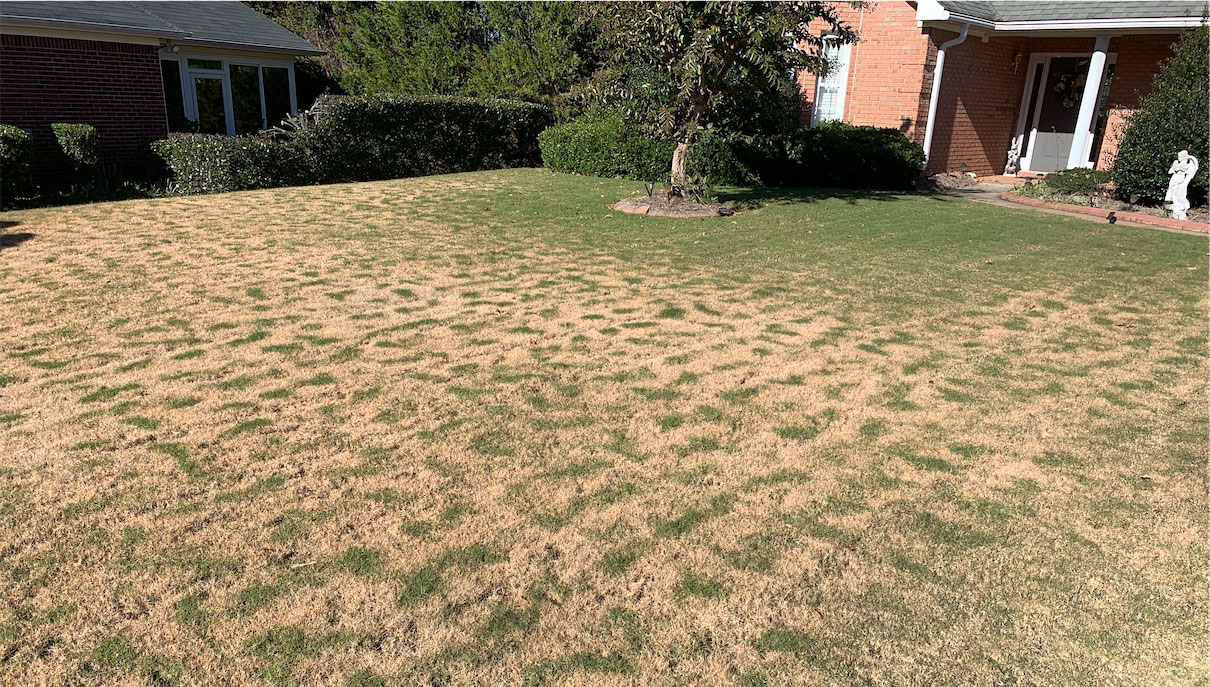It’s late fall. Halloween has come and gone, and we’re looking forward to the warm, fuzzy holiday feelings. Soon, however, our yards will neither feel warm nor fuzzy. In Metro Atlanta, we experience our first frost sometime around the second week of November, and it accelerates the transition from slow growth to full dormancy. The process doesn’t always result in a uniform look, however. Often, in fact, initial expression can result in a mosaic pattern of stripes and spots across the open areas of lawns, resembling tiger stripes or camouflage.
What Causes My Lawn to Have Stripes?
The short answer: Inconsistencies in ground temperature.
The temperature of air changes much more quickly than the temperature of soil. This is evident in the difference between daytime temperatures and nighttime temperatures. During the day, heat from the sun causes the afternoons to be typically warmer than nights. Our soils, however, which are a combination of particles and pores filled with air and water, only fluctuate by a few degrees. It takes consistently cooler air temperatures to reduce ground temperatures.
In our blog about dormancy, we talk about how frost and freezing air temperatures freeze our leaves, turning them tan for the winter. The tan stripes are evidence of that process starting, while the green stripes are created by warm patches in the soil radiating heat. Eventually, as ground temperatures cool and frost happens a few more times, these areas will also retire to their “long winter’s nap.”
Will My Patchy Lawn Recover Evenly in the Spring?
The patchy lawn you may see just before full dormancy has no direct, long-term effect on plant health. The stripes and spots eventually surrender to full dormancy for winter. The warm-season turfs have been preparing for this, storing energy through the fall. There are other environmental factors that can result in inconsistent green-up of your lawn, but this isn’t one of them. We’ve fertilized and cared for your lawn to make it the most hardy it can be through winter, and we’ve prepared your lawn for a successful spring.
Whenever you have questions about your lawn, feel free to call us. We maintain a full staff of customer support professionals who are ready to discuss your concerns. They are one of the many ways Nature’s Turf aims to earn and maintain a spot on your team.








